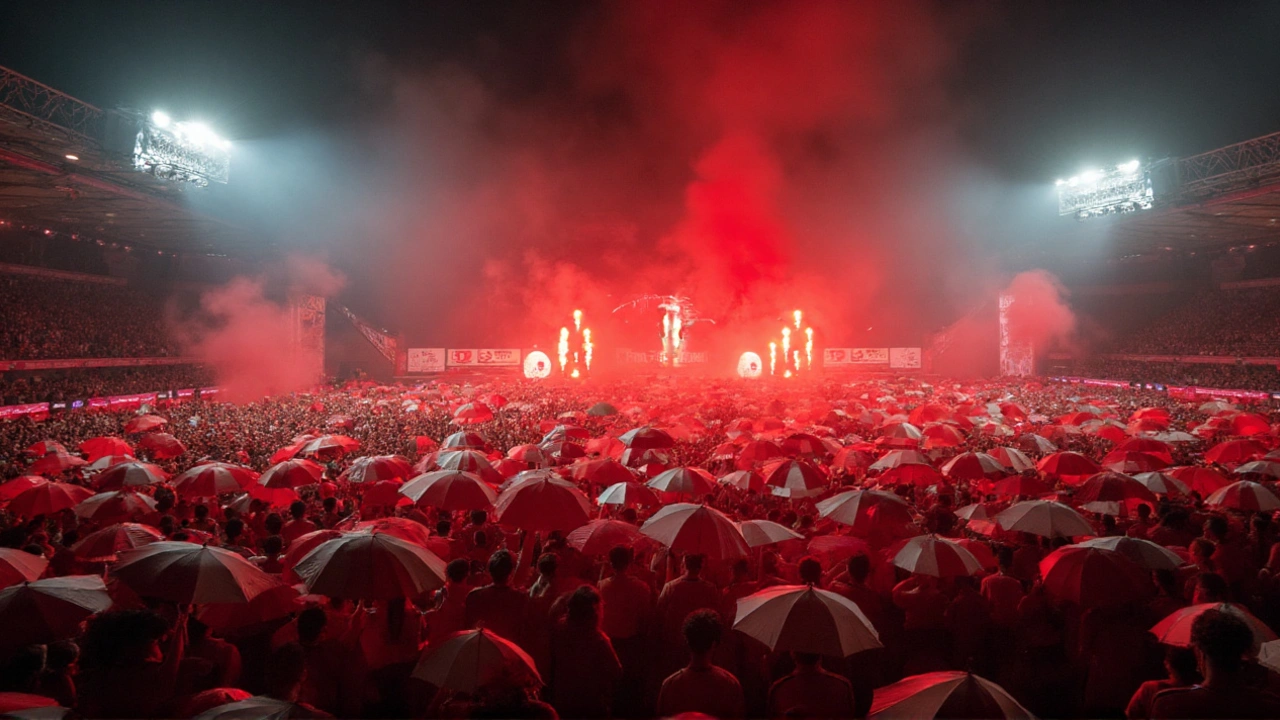Club World Cup – Latest News, Insights and Highlights
When talking about the Club World Cup, the FIFA‑run tournament that brings together the champion clubs from each continent. Also known as FIFA Club World Cup, it serves as the ultimate showdown for club football across the globe. FIFA, the world governing body for soccer organizes the event, setting the calendar, venue and qualification rules. Real Madrid, Spain’s most decorated club often dominates the competition, influencing the tournament’s marketability and viewership.
How the tournament works and why it matters
The Club World Cup follows a knockout format after a brief group stage. Teams qualify by winning their continental championships – the UEFA Champions League, CONMEBOL Libertadores, CAF Champions League, AFC Champions League, CONCACAF Champions League, and OFC Champions League. The group stage usually features the host nation’s champion and the representatives from Asia and North America, forming a tight three‑team round‑robin. Winners advance to face the pre‑qualified European and South American clubs in the semifinals. This structure means the event blends emerging markets with football’s traditional powerhouses, creating a platform where a surprise upset can rewrite club legacies.
Hosting rights rotate annually, and the 2025 edition lands in Miami, a vibrant US city with a growing soccer fanbase. The city’s stadium capacity, climate and media infrastructure make it an ideal stage for a global audience. Miami’s role as host also draws in corporate sponsors, tourism revenue and local youth engagement programs that promote the sport in the region. The venue choice directly influences ticket sales, broadcast deals and the overall economic impact of the tournament.
Group dynamics are a key storyline each year. In the current edition, RB Salzburg, the Austrian club that qualified via the UEFA Champions League found itself in Group H alongside Real Madrid and a host nation side. Their performance affects the group standings, goal difference and the eventual knockout match‑ups. When a club like Salzburg pulls off a surprise win, it reshapes betting odds, fan expectations and media narratives, proving that the Club World Cup isn’t just a formality for the big clubs.
Another crucial entity is the tournament’s trophy, often referred to simply as the Club World Cup trophy. Crafted from gold‑plated metal, it symbolizes global supremacy and carries significant prestige for players and managers alike. Winning the trophy can boost a club’s brand value, attract high‑profile signings and increase merchandising revenue. For coaches, adding the trophy to their résumé often opens doors to elite job offers and cements their legacy in the sport.
The competition also sparks intense tactical battles. Coaches must adapt quickly to unfamiliar opponents, varying styles, and limited preparation time. For example, the transition from a defensive, low‑block approach in South America to a high‑pressing, possession‑based game typical of European sides forces managers to tweak formations on the fly. This tactical flexibility becomes a hallmark of successful clubs in the Club World Cup, and it fuels endless analysis among pundits and fans alike.
From a commercial perspective, broadcasting rights are sold to a global audience that includes emerging markets in Africa and Asia. Networks negotiate exclusive deals for live coverage, highlights and post‑match analysis, generating billions in revenue for FIFA and participating clubs. Sponsorship packages often feature global brands seeking exposure to diverse demographics, making the Club World Cup a lucrative platform for advertisers.
Fans also play a pivotal role. Social media buzz, trending hashtags and live‑chat discussions amplify the tournament’s reach. When a star player scores a spectacular goal, the clip circulates within minutes, driving engagement and attracting casual viewers. This fan‑driven amplification helps smaller clubs gain visibility they might never achieve in their domestic leagues.
Looking ahead, the Club World Cup’s format may evolve. Proposals include expanding the number of teams, adding a second group stage, or rotating the host between continents each year. Such changes aim to increase competitiveness, boost revenue and give more clubs a chance to compete on the world stage. Whatever the future holds, the core idea remains: bringing the best club teams together for a global showdown.
Below you’ll find a curated collection of articles that dive deeper into these themes—match reports, player profiles, tactical breakdowns and business analysis—all centered around the Club World Cup’s excitement and impact. Browse the list to get the full picture of how this tournament shapes the football world today.

